
Are Nightshade Vegetables Dangerous?
Vegetables are a well-known source of nutrients containing vitamins, minerals, fiber, and antioxidants which are essential for optimal human health and vitality. But did you know that some of your favorite vegetables could be making you sick? Nightshade plants and vegetables have long been researched as a possible link between chronic inflammation in the body leading to a variety of symptoms and illnesses.
Research suggests that up to 90% of individuals who suffer from any form of chronic joint pain are sensitive to nightshades (1). Dr. Norman Childers at Rutgers University established the Arthritis Nightshade Research Foundation and is most known for his success in identifying health risks associated with vegetables.
Dr. Childers was able to completely reverse his symptoms of rheumatism, an arthritic condition, by following a strict nightshade avoidance diet. Could you be one of those individuals suffering from nightshade sensitivity? (2)
What Are Nightshades?
Nightshades belong to a family of plants known as Solanaceae, most of which we would consider weeds (1). Solanaceae contains a variety of naturally occurring drugs known as alkaloids which protect the plant from insects, predators, and disease (3).
Popular nightshades that may be on your dinner table tonight include tomato, potato, and all pepper varieties except peppercorns. Others in this family include eggplant, okra, goji berries, tomatillos, sorrel, gooseberries, ground cherries, tobacco, paprika, cayenne pepper, and pepino melons. (4, 1)

Do Nightshades Increase Inflammation?
Human health concerns stem from a variety of sources linked to nightshades. As with many other food allergens, such as gluten sensitivity, individuals may be more or less allergic to different types of nightshades.
Such factors that determine sensitivity include the concentration and type of alkaloid present as well as the tolerance the individual has and the ability to deactivate and detoxify the compounds.
*Many individuals can consume high levels of these foods without ever having negative health issues. Others will have inflammatory flares with even small consumption. *

Alkaloids Cause Nervous System Imbalances
Alkaloids are referred to as pro-inflammatory markers (1). Examples of these naturally occurring drugs might already be of familiarity to you:
Common Alkaloids and Their Sources:
Solanine – Potato and eggplant
Tomatine- Tomato
Nicotine- Tobacco
Capsaicin- Peppers
Just like tobacco, these alkaloids might be partially to blame for your addictive behaviors to some foods. Solanine has been studied to inhibit cholinesterase, an enzyme that breaks down neurotransmitters like acetycholine and acts like the less favored identical twin. Acetycholine serves as the body’s messenger and is responsible for stimulating nerves, muscles, and glands.
Excessive acetylcholine results in overstimulation. Toxic levels of acetylcholine lead to nervous system problems including anxiety, depression, behavioral disturbances, lethargy, cognitive issues, muscle stiffness, and insomnia. (6, 1)
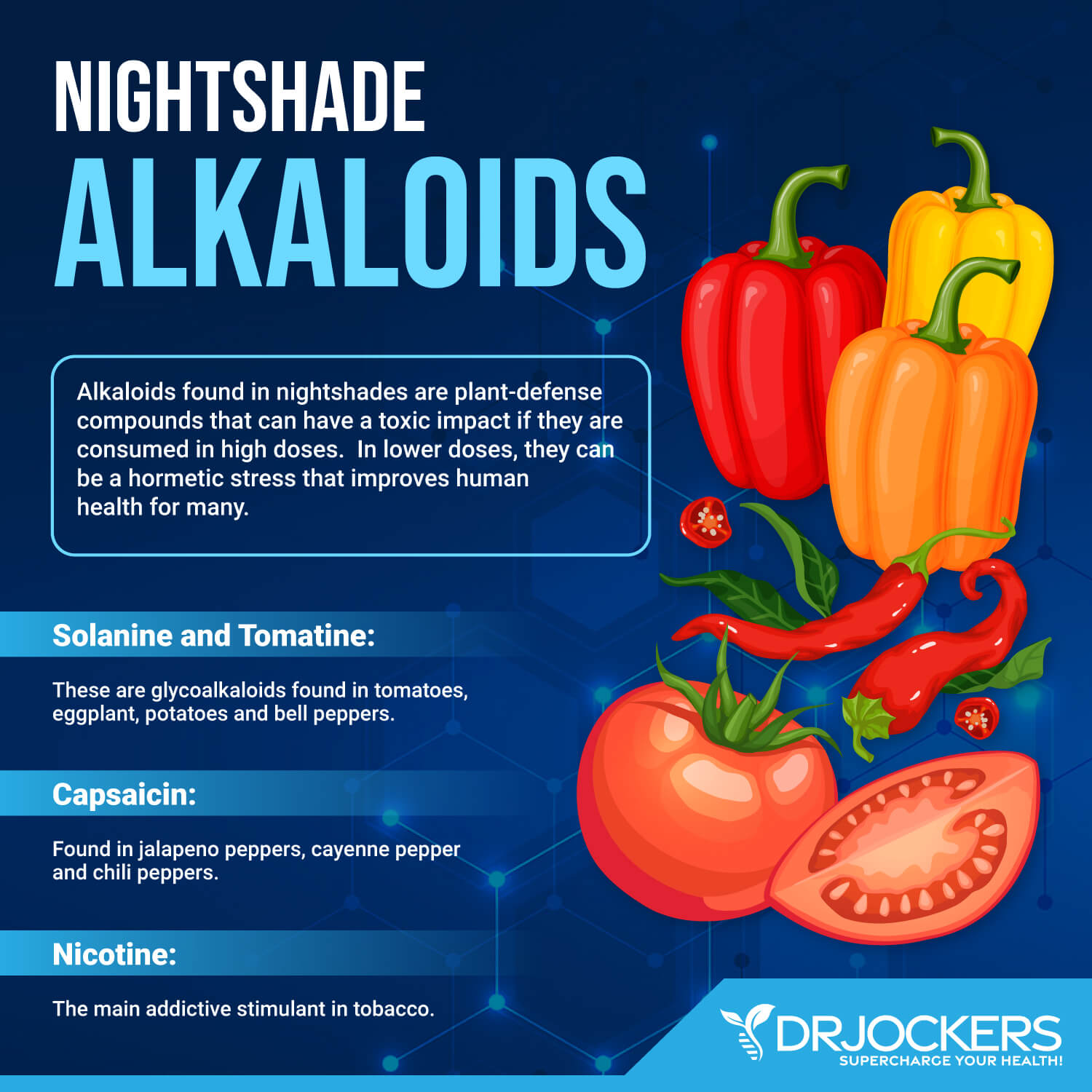
Solanine & Tomatine
Solanine is a glycoalkaloid or an alkaloid compound combined with a sugar molecule. Solanine is primarily found in potatoes and tomatoes contain a similar compound called tomatine.
When the body metabolizes solanine, the sugar cleaves off creating a compound called solanidine. While this isn’t immediately toxic in amounts taken in through our diet, the solanidine can be stored in the body and may be released during times of stress. This can aggravate the joints, the digestive system, the brain, and skin (12, 13, 14).
Solanine and other steroid alkaloids are produced in a similar manner as chlorophyll and are concentrated in the green portions of the plant. Therefore, green tomatoes have higher amounts of this compound than red tomatoes and sprouting or green potatoes have higher amounts than regular potatoes.
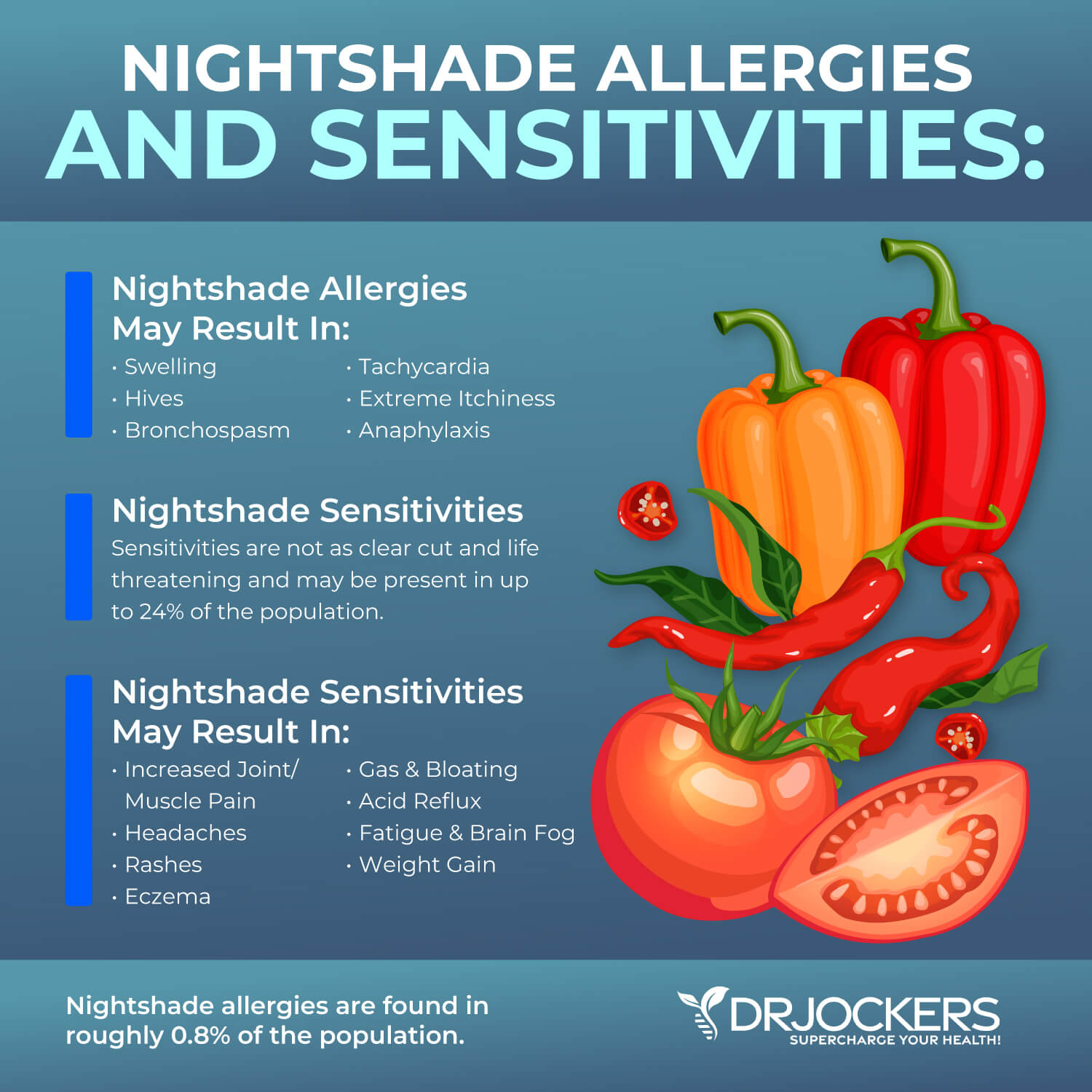
Capsaicin
Capsaicin is the active ingredient found in hot peppers and is commonly recognized for its anti-inflammatory properties. This is an alkaloid compound that can be inflammatory in some individuals and anti-inflammatory in others depending upon how their body tolerates and metabolizes it.
Capsaicin releases substance P which is a neuropeptide that helps with the communication process of the pain messages. After the initial irritation of contact with capsaicin and the release of substance P, there is a refractory period of deadened sensation – as you have also noticed when the third and fourth bites of salsa aren’t as shocking. (15)
This is the mechanism that gives capsaicin a pain-relieving effect that is often used topically as an analgesic for osteoarthritis. (16)
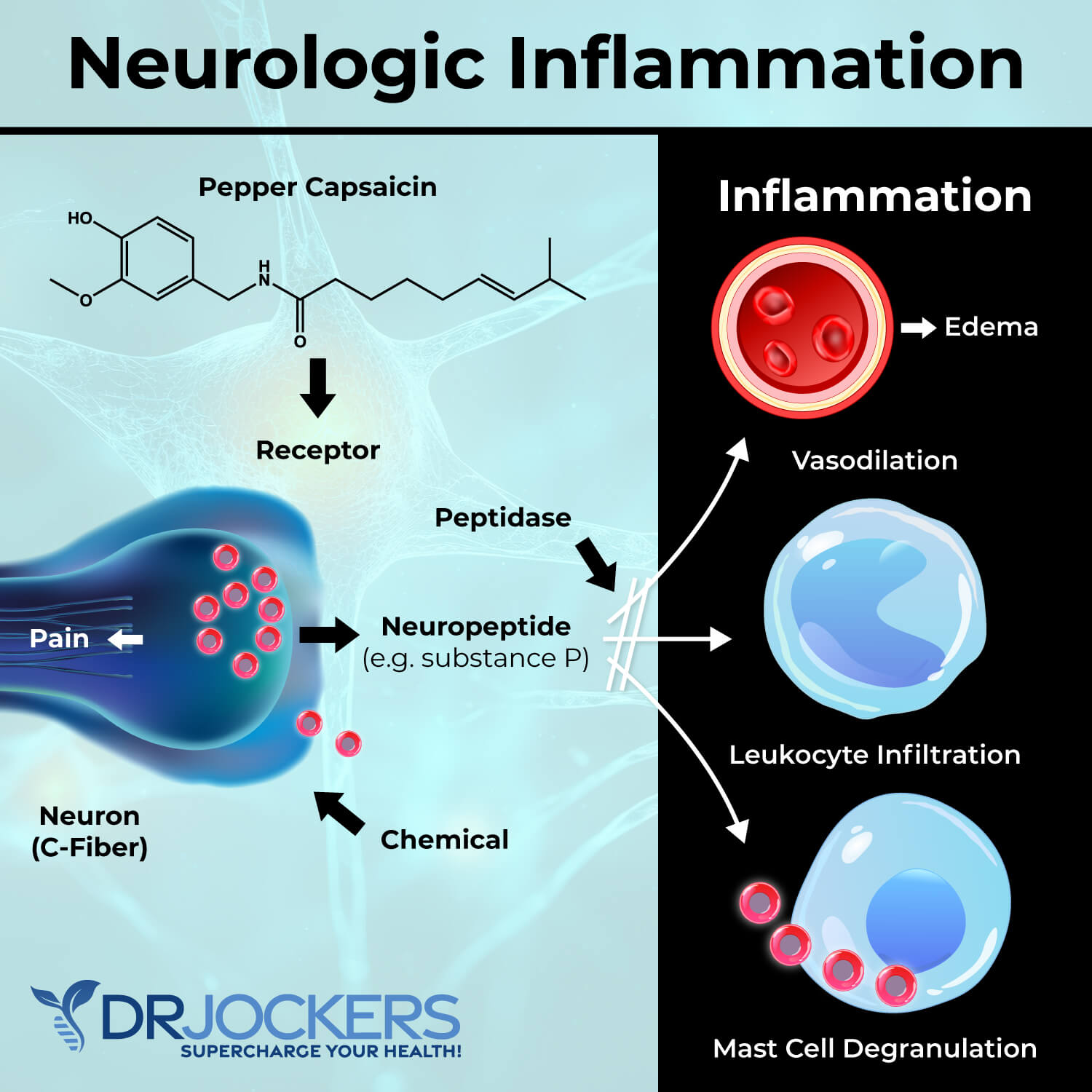
Nicotine:
Nicotine is another alkaloid compound that is found in nightshade vegetables (17). Nicotine is what is credited with giving tobacco its addictive qualities. The tobacco plant is actually in the nightshade family as well.
This compound is found in all nightshade vegetables and may play a role in our society’s love for potatoes and tomatoes! Just think of potato chips and salsa and french fries and ketchup!
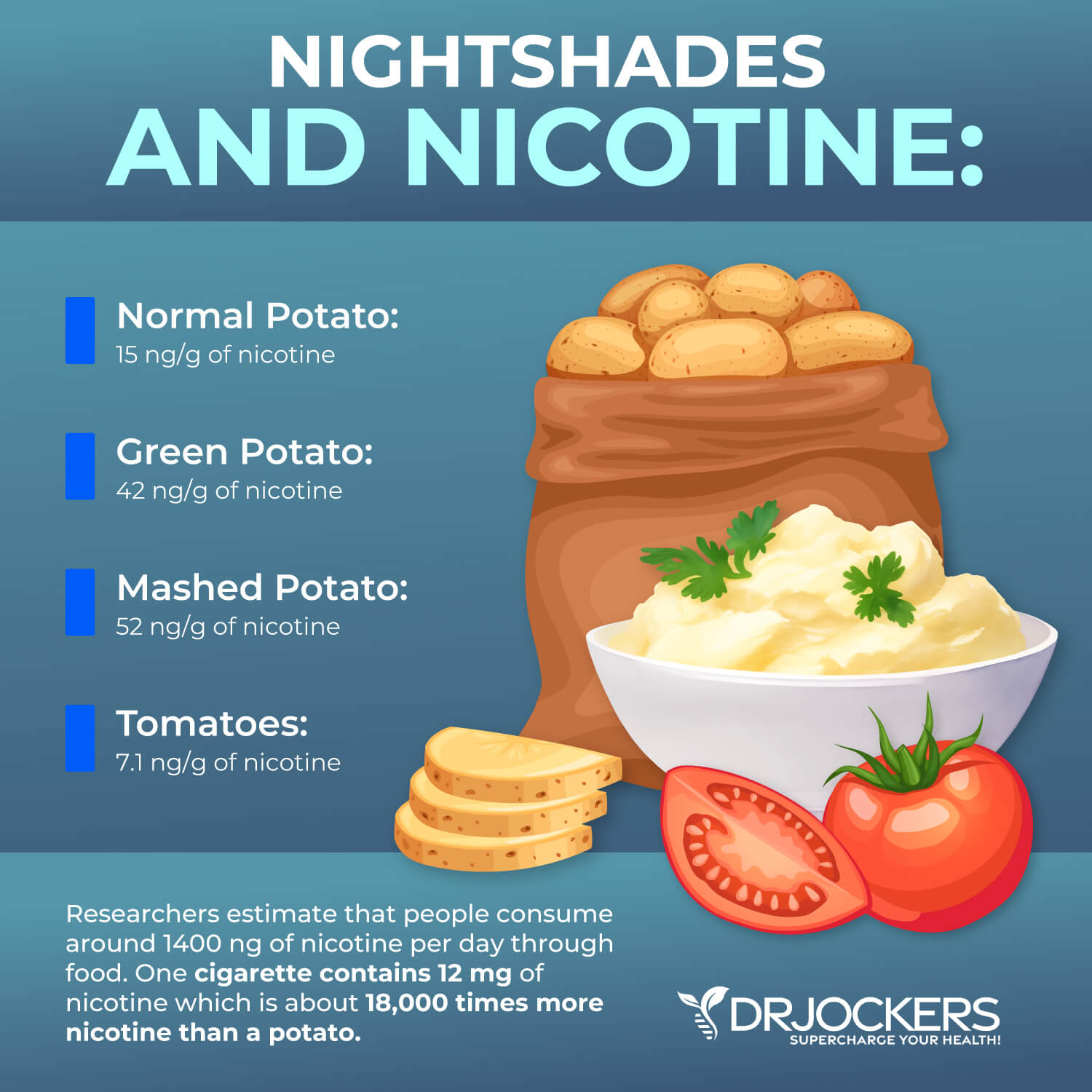
Systemic Inflammation:
Systemic inflammation involves the whole body’s response to a traumatic injury. Biologically, our body has its own built in natural defense system known as the immune system. The immune system is responsible for signaling to our cells that some sort of stress has either entered or is perceived by the body. This could range from bacterial invasion to the emotional stress you face from daily life challenges such as work. (10)
Over prolonged periods of stress, systemic inflammation is the result of an overactive inflammatory response runs rampant leading to tissue damage. Other chronic illnesses caused by systemic inflammation are autoimmune disease, cancer, multiple sclerosis, and Crohn’s disease. (6, 2, 3, 1)
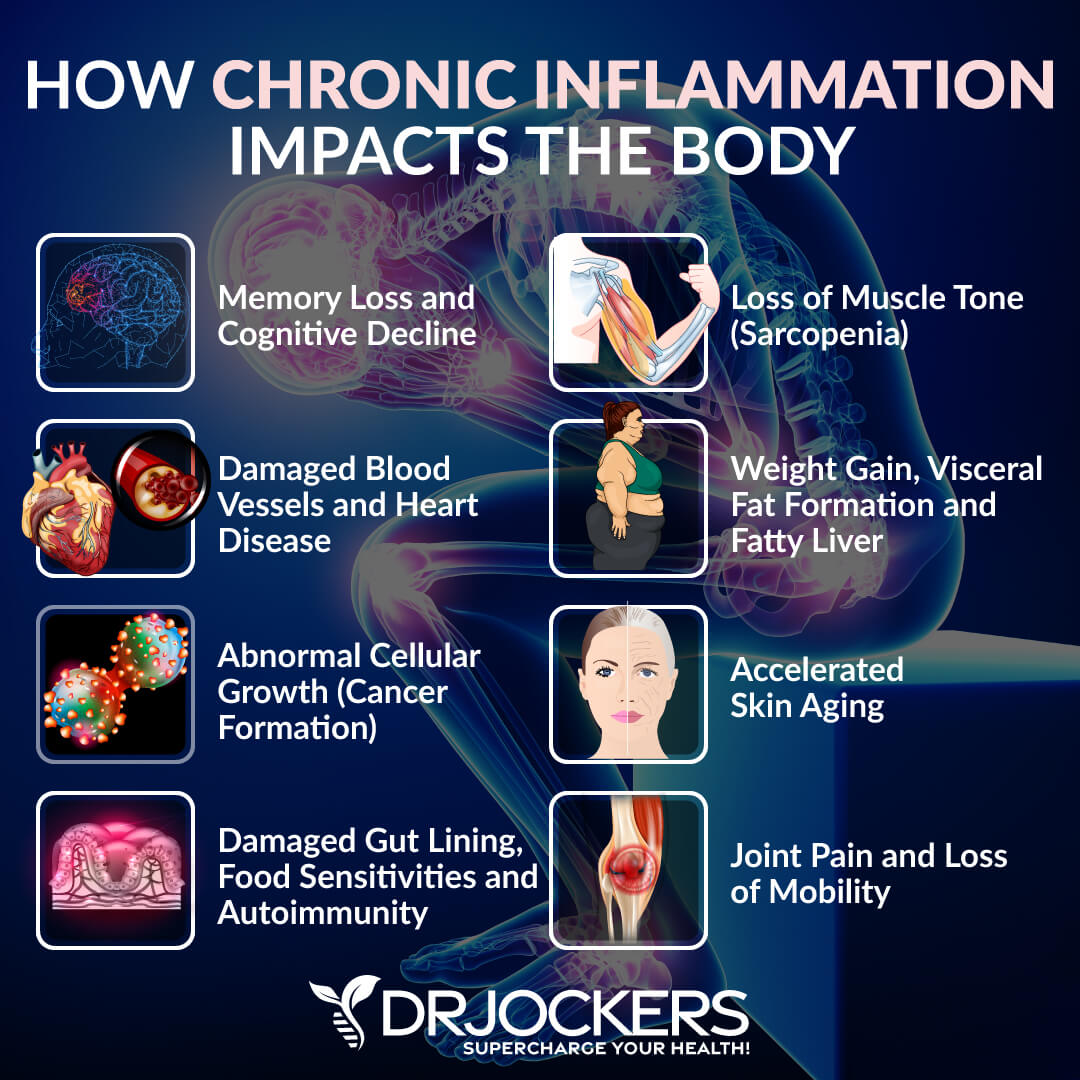
Avoid Hidden Dangers of Inflammation
The hidden dangers of nightshades lurk in every aisle at the grocery store and any restaurant or pharmacy. Maybe you have eliminated all known produce sources and any product originating from those food sources, or so you thought. Here are just a few ways to identify where your symptoms of inflammation might be coming from.
- Read ingredient lists on the back of manufactured foods. The term “spices”, “seasonings”, or “Italian” likely contain paprika or tomato and should be avoided.
- Become an educated foodie. Muenster cheese, mayonnaise, croutons, mustard, margarine, and even deli meat contain paprika.
- Food additives are incorporated for a variety of reasons from adding color to increasing shelf life or giving the product bulk. Anything labeled “starch”, “food starch”, or “modified food starch” is likely sourced from potato. These additives are common in packaged foods, vitamin supplements, topical medications, prescription drugs, and even some homeopathic remedies that contain belladonna.
- In case you need another reason to quit smoking, tobacco products are a major source of nightshades. This includes both inhalation and ingestion of tobacco products.
- Genetically modified (GM) foods pose numerous health risks. It is impossible for consumers to know what food sources exist in GM foods. Even a trace amount of nightshade plants can trigger a severe allergic reaction.
- Skip the vodka. Vodka is a hidden potato source.
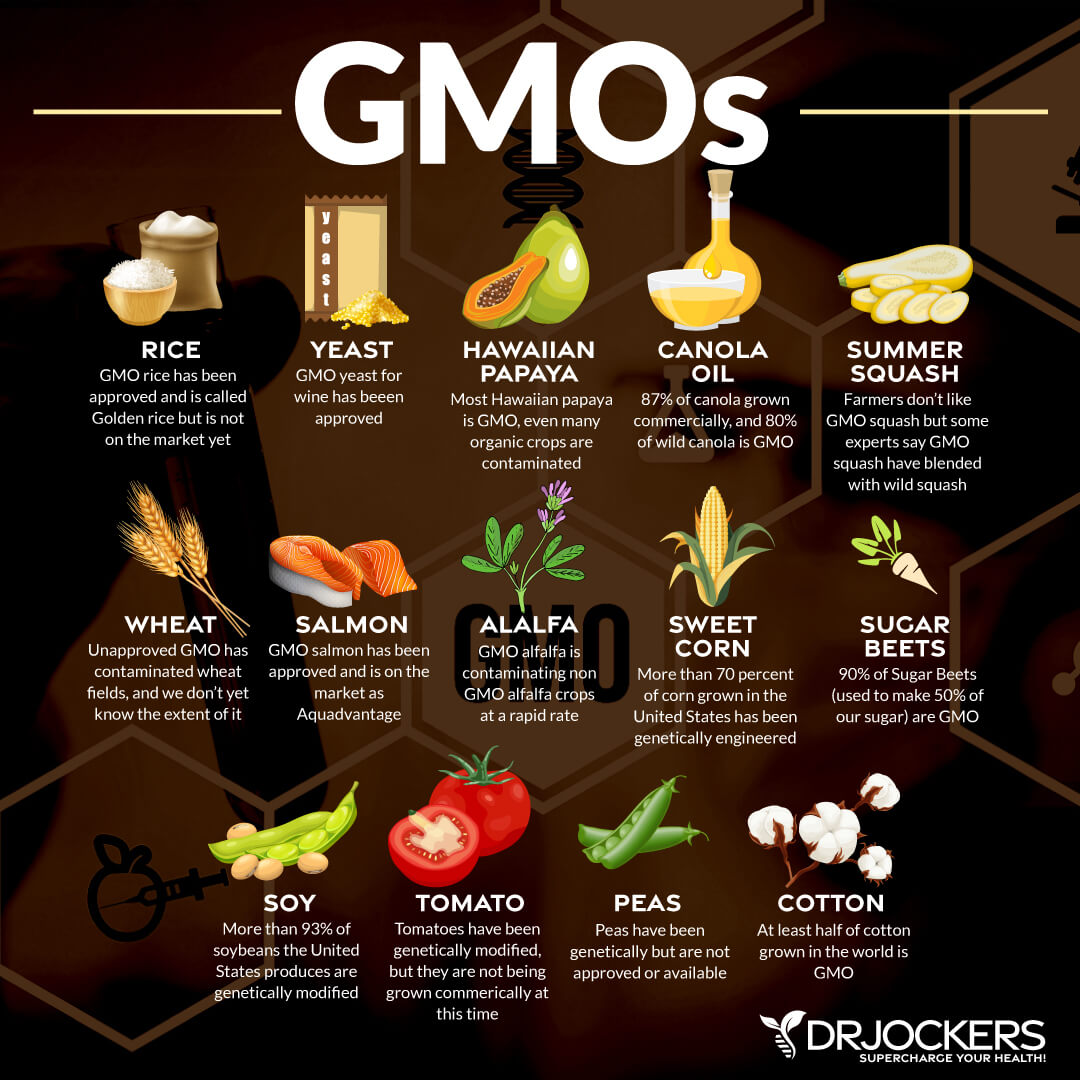
Tips and Tricks: How Can I Live?
Don’t laugh. Eliminating or even limiting nightshade foods is a struggle once you learn how prevalent these foods are. Read on to learn of several ways to make substitutions in your diet and don’t feel discouraged.
- Replace potatoes with parsnips, butternut squash, yams, or sweet potatoes. These vegetables won’t trigger inflammation and you will receive added nutrition in your diet.
- Does the thought of no longer being able to enjoy some of your favorite Italian dishes like pasta marinara, lasagna, or pizza make you want to pretend that you never learned of nightshade triggers? Experiment with beets. Many Paleo recipes actually avoid nightshades because they are a source of inflammation and can offer great “nomato sauce” recipes for tomato sauce replacement (7).
- Order foods without seasoning at restaurants and bring your own spice blend. All varieties of peppercorns are safe to consume along with ginger or horseradish.
- Without evil, there can be no good, and so find products that fit your demands. Whole Foods offers a “naked” line of deli meats and chicken with no added spices.
- So you can’t have the potato chips you crave anymore. Bare Foods Company has a variety of dried organic apple and coconut chips for your next indulgence.
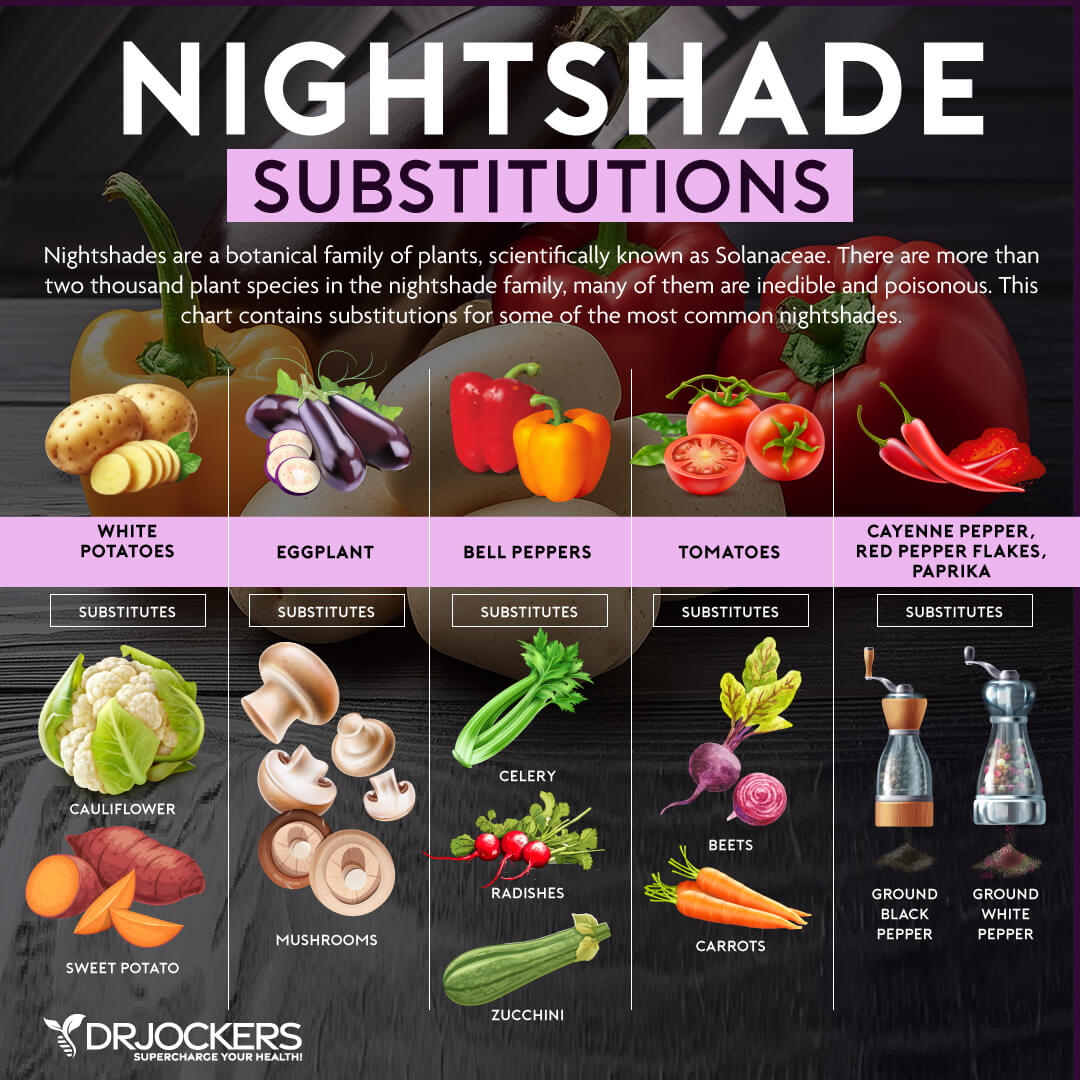
Improve Your Health
Eliminating nightshades from your diet may improve your mental, emotional and physical health. Unfortunately, today, drugs are prescribed or taken to suppress symptoms and never cure our problems. Take an Advil, hide the pain. Swallow Benadryl, block the itch.
An early research investigation determined that 94% of people on a strict no nightshade diet had complete or substantial relief from arthritic symptoms (2).
When I was Growing Up…
Maybe you have heard your grandmother say, these foods were never a problem back when I was growing up so why is there suddenly a rise in sickness and disease associated with eating these foods? The answer is both simple and complex. Growing demand for cheap and fast foods has caused the food industry to change the type of foods we are putting into our bodies today.
Foods are laden with trans fats, sugars, GMOs, synthetic chemicals and pesticides, which by the way also have some of the same properties as alkaloids do (8). Consequentially our meals have been zapped of the nutritive value that foods once contained when grandma was growing up.
Although nightshades have always been a source of potentially toxic compounds, our bodies were better able to respond to the effects. Now it is a rarity that the next two people you come across do not have some form of inflammation detectable by leaky gut syndrome, irritable bowel syndrome, asthma, diabetes, or an autoimmune disorder.

Nightshade Elimination Diet
A report in 2010 from the Center for Disease Control and Prevention (CDC) recognized arthritis as the most common cause of disability in the United States expected to significantly increase by 2030 (9). Don’t be part of the rising statistic for those suffering with arthritic symptoms. Chances are you have some sensitivity to nightshades and don’t even realize it.
The autoimmune and leaky gut diet that I teach are both free of nightshade vegetables. In addition, most of us will do well with eliminating these foods for a short period of time.
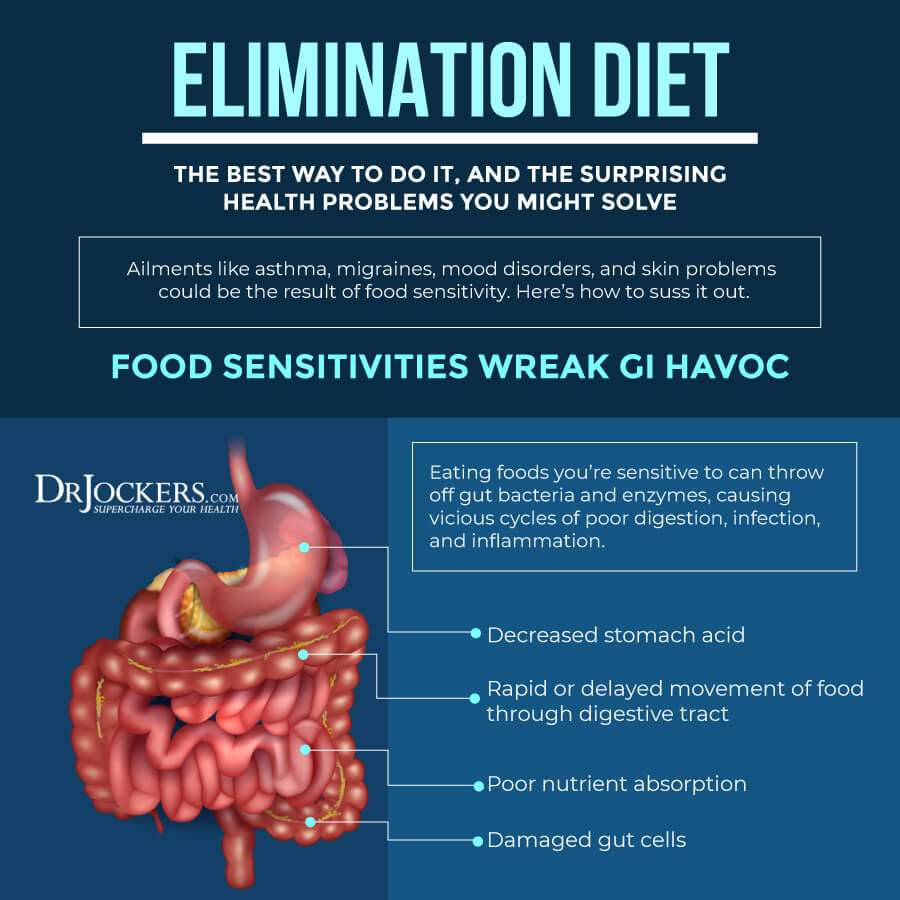
Test for Nightshade Sensitivity
One recommended approach to testing for nightshade sensitivity is to eliminate all forms of nightshades from your diet for a minimum of 30 days. This includes any nightshade vegetable source, ointment creams, vodka, supplement, or pill containing starch or tobacco.
Depending on your choosing, introduce any variety of nightshades back into your diet for a period of two days. If you might already have an idea to a certain food allergen, reintroduce this vegetable back as the only nightshade source. Following the two day period, monitor your body’s symptoms over the next 72 hours (3 days). (5)
Keep a journal to monitor your symptoms for better and worse. Like any detox diet, you are likely to experience withdrawal symptoms such as irritability, fatigue, or headaches. As detoxification progresses, document your results.
- Do you have more energy?
- Do symptoms of your IBS pain lessen or disappear?
- Are your achy joints not so stiff anymore?
- Are your chronic headaches becoming less severe or less frequent?
- Are you happy?
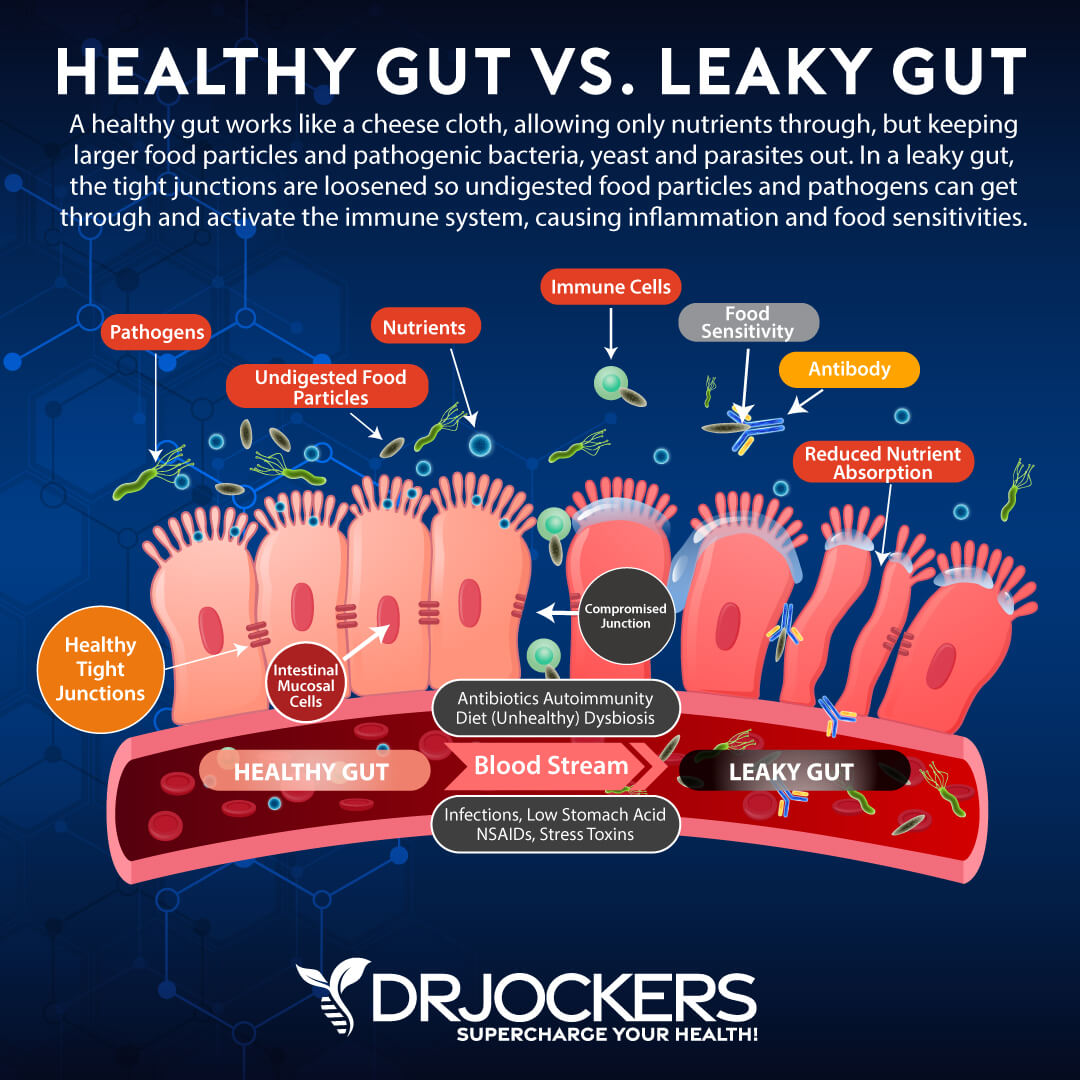
A Lifestyle Choice
Remember, different vegetables have different alkaloid content available and you may not have severe allergens to all. The key to maintaining a healthy lifestyle and avoiding the negative impacts that can come along with enjoying a fresh, sun kissed vine ripened tomato is to first heal your gut.
A healthy immune system can take on the stress of low doses of nightshade vegetable consumption and you will be able to enjoy some of the foods you love again without the chronic inflammation. For more information, check out the Autoimmune Diet & Recipe Guide here
Inflammation Crushing Ebundle
The Inflammation Crushing Ebundle is designed to help you improve your brain, liver, immune system and discover the healing strategies, foods and recipes to burn fat, reduce inflammation and Thrive in Life!
As a doctor of natural medicine, I have spent the past 20 years studying the best healing strategies and worked with hundreds of coaching clients, helping them overcome chronic health conditions and optimize their overall health.
In our Inflammation Crushing Ebundle, I have put together my very best strategies to reduce inflammation and optimize your healing potential. Take a look at what you will get inside these valuable guides below!
Sources For This Article Include:
-
Fibromyalgia and Nightshade Foods Link Here
-
An Apparent Relation of Nightshades (Solanaceae) to Arthritis Link Here
-
Nightshade-Free Survival Guide Link Here
-
Draft genome of the kiwifruit Actinidia chinensis Link Here
-
Nightshade (Solanaceae) food allergy Link Here
-
Problems from these Popular Foods Exposed to the Light of Day Link Here
-
I can’t believe it’s Nomato Sauce Link Here
-
Cholinesterase Inhibitors: Including Insecticides and Chemical Warfare Nerve Agents Part 2: What are cholinesterase inhibitors? Link Here
-
Prevalence of Doctor-Diagnosed Arthritis and Arthritis-Attributable Activity Limitation — United States, 2007—2009 Link Here
-
Systemic Inflammation Link Here
-
Masterson JG, Frost C, Bourke GJ, Joyce NM, Herity B, Wilson-Davis K. Anencephaly and potato blight in the Republic of Ireland. British Journal of Preventive & Social Medicine. 1974;28(2):81-84.
-
Kinetics and retention of solanidine in man Link Here
-
Wikipedia – Acetylcholinesterase inhibitor
-
Solanine poisoning. British Medical Journal. 1979;2(6203):1458-1459.
-
Mechanisms and clinical uses of capsaicin Link Here
-
Laslett LL, Jones G. Capsaicin for osteoarthritis pain. Prog Drug Res. 2014;68:277-91. PMID: 24941673
-
Siegmund B, Leitner E, Pfannhauser W. Determination of the nicotine content of various edible nightshades (Solanaceae) and their products and estimation of the associated dietary nicotine intake. J Agric Food Chem. 1999 Aug;47(8):3113-20. PMID: 10552617

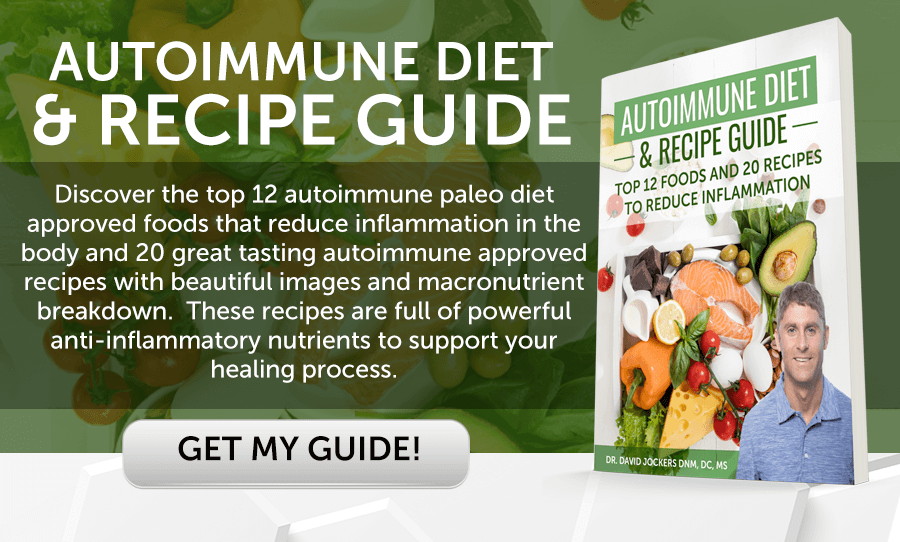




I thought Vitamin D3 was beneficial. This article on nightshades talks about the work of Dr. Childers who believes nightshades are responsible for the inflammation of arthritis. Dr. Childers claims that nightshades contain an active form of vitamin D3 which causes arthritis. Very confusing.
I think the active form of D3 is Calcitriol… which is in some nightshades, but not the edible ones as far as I can tell. Some articles are stating Calctriol is in the nightshades we eat but I can’t find any reliable source for this assertion.
I can say from first hand experience though… Nightshades affect me badly… with Hidradenitis Suppurativa (Boils)
Sorry to hear this Tony!
Absolutely Tony! I suffer from HS as well and removing nightshades from my diet has been a miracle. I now have to read every label on everything I buy but in the long run, it is worth it 100%.
Right now April 2019, I’m suffering because I accidentally ate something that had potato powder in it (I missed that ingredient somehow?). 3 weeks of continous misery and chronic pain. My mistake by getting to comfortable with my scanning the ingredients. 🙁
This is great information and validates my own experience a long time ago, growing and canning tomatoes from my first garden. While I love tomatoes and continued eating them throughout the fall, I fairly quickly reached a point where the pain in my knees and ankles nearly stopped me from using stairs at all.
When I told a friend about it, she immediately knew enough to say ‘Nightshade’. First stopping tomatoes altogether, brought almost immediate relief and today I limit myself to a couple of meals per week and am pain free!
Thanks for posting this valuable guide.
I just wanted to point out that okra, sorrel, cardamom, and even regular gooseberries (except for cape gooseberry) are NOT part of the Solanaceae/nightshade family.
I am thru blood work Vitamin D deficient I take 2000units a day how do I bump my levels up with out taking the supplement
I would recommend taking larger dosages. I recommend 1,000 IU per 25 lbs of body weight. Blessings!
Nightshade removal for HS is a must!
If you surfer from HS, as an experiment on yourself, remove nightshades for 1-2 months and be amazed! Then eat a potato or tomato and then expect to be in misery within 24 hours, for 2-4 weeks.
Hey Canco, Thank you for sharing!
I am just now finding out about the negative affects of nightshades and lectins. I was diagnosed with Hashimoto back in 2015 and was told eventually I would have to take prescribed medication. I have not taken medication as of today and have tried several supplements, detox and moved to a gluten free diet to maintain. After reading about nightshades and lectins, it appears my next step is to remove the nightshades and lectin for 30 days to see if that will make a difference.
I have heard and have tried eliminating Nightshades to prevent Atrial Fibrillation. Also High Fructose corn syrup in sauces or broths and MSG Mono sodium glutamate. Also Autolyzed yeast extract which becomes MSG when heated per a food chemist. When I avoid all those items I don’t have Atrial Fibrillation. Restaurants are difficult as these items are hidden in sauces, gravies and dressings, also marinades.